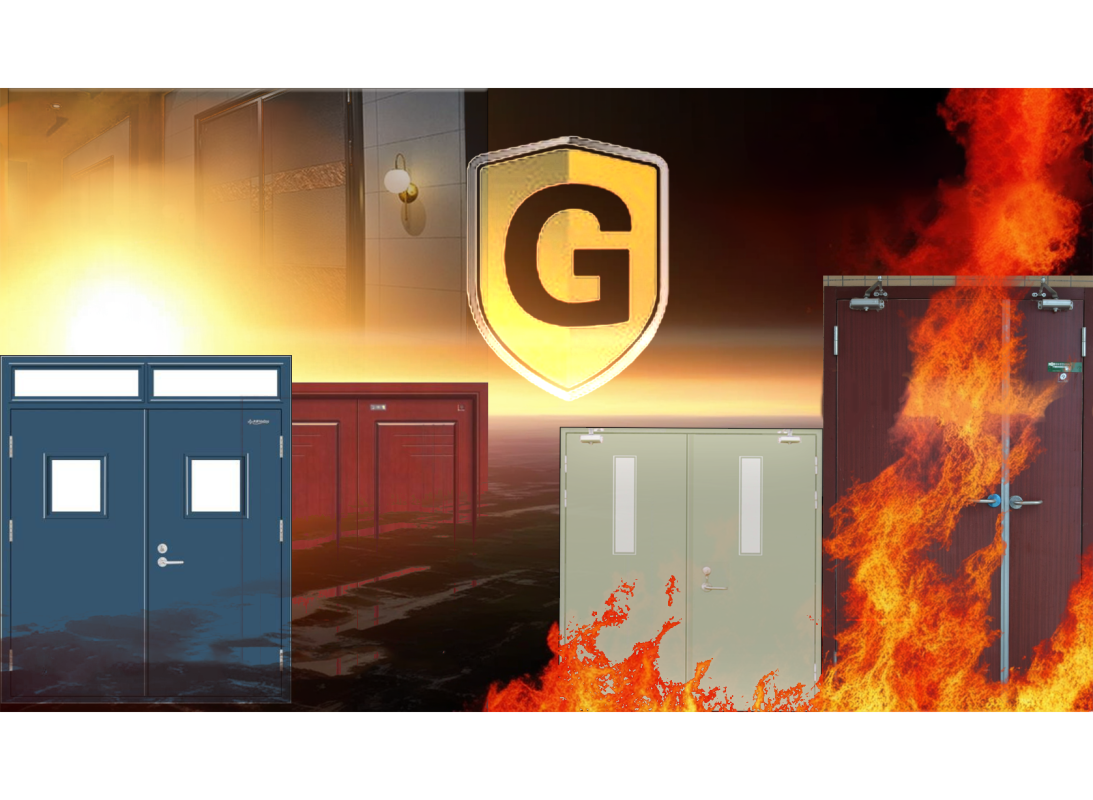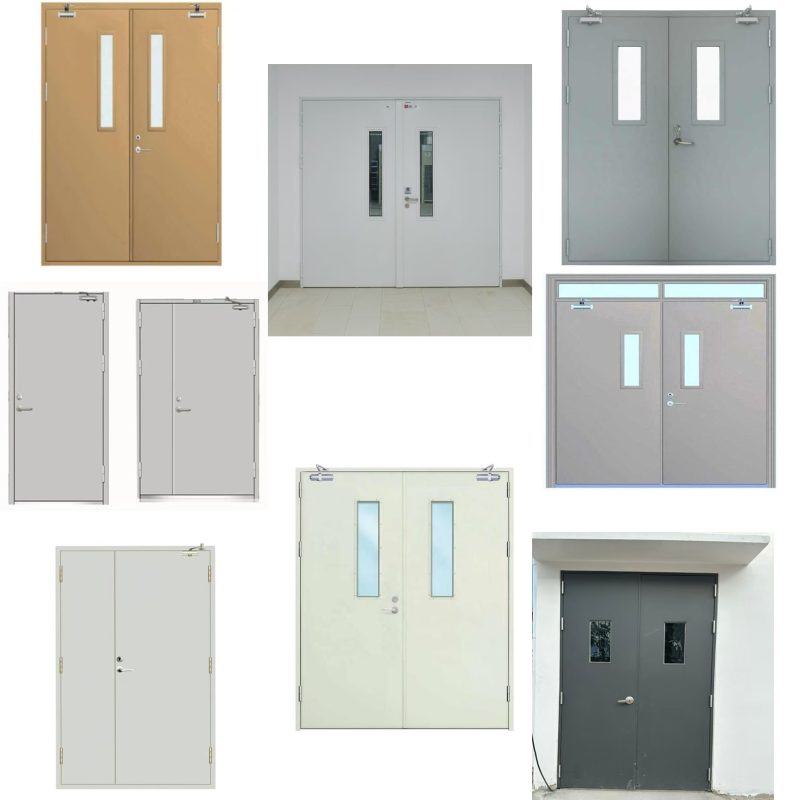To support Guangdun Door Industry Co., Ltd.’s goal of expanding the reach of our fire doors in Market Overview of Russia’s fire Building Material Industry. we conducted a comprehensive survey of the Russian building materials market. This survey, focusing on regions such as Amur Oblast and larger urban centers like Moscow and Saint Petersburg, provided key insights into the current demand, trends, and competitive landscape in Russia’s building sector.

Key Findings and Russia’s fire Building Material Opportunities
Russia’s construction industry reveals a strong demand for certified fire doors that meet safety and regulatory standards. With many buildings requiring fire-resistant materials, Guangdun Door Industry Co., Ltd. sees great potential to introduce our high-quality fire doors, which are rigorously tested and compliant with stringent fire safety standards. By leveraging our expertise, our company aims to establish itself as a leading fire door supplier in Russia, offering products tailored to both residential and commercial markets.
Strategic Market Entry and Benefits of Our Fire Door Products
Our survey emphasized the importance of reliable fire safety solutions, particularly in large urban areas where fire door installations are required by law. Guangdun Door Industry Co., Ltd.’s 60-minute fire-rated doors and other fire-rated products are highly suitable for the Russian market. These products are competitively priced while ensuring robust protection, meeting the dual demands for affordability and quality.
Market Research Report on Russia’s Fire Door Building Materials(Guangdun Door Industry Foreign Trade Department Project)
Table of Contents
- Purpose of the Survey
- Survey Subjects
- Survey Locations and Overview
- Survey Methods
- Survey Content
- Survey Results
- Summary of Findings and Future Plans for Our Company (Feasibility Plan)
- Revenue Forecast and Risk Assessment
- Project Startup Costs
- Other

Chapter 1: Purpose of the Russia’s fire Building Material Survey
1. Market Overview of Russia’s Fire Building Material Industry Objectives
To enhance the growth of Guangdun Door Industry Co., Ltd. in the building materials sector, we are expanding beyond China to target global markets. We dispatched a dedicated team to investigate the building materials market in Blagoveshchensk, Amur Oblast, Russia. Given the relatively small population in the city center, we identified this area as a strategic hub for international trade. Our future plans include expanding to key markets such as Novosibirsk, Moscow, and Saint Petersburg.
By implementing the “Belt and Road” initiative, we aim to achieve mutual economic benefits with Russia. The collaboration between China and Russia is increasingly strengthened, not only at the governmental level but also in private trade exchanges, which are showing positive growth trends.
Through this on-the-ground investigation of the Russia’s Fire Building Material, we seek to deepen our understanding of available materials, particularly fire door products. This knowledge will enable us to identify new materials and technologies, assess market conditions, and understand pricing, dimensions, physical properties, and applications of various materials. Ultimately, this effort supports our strategy of fostering international partnerships and expanding our fire door offerings globally.
Chapter 2: Survey Subjects
2. Survey Subjects
The investigation covers various aspects of the Amur Oblast region, including its economy, culture, demographics, geography, resources, and policies. The survey focuses on the condition of completed buildings and the types of materials available, such as stone, boards, ceramics, bathroom fixtures, flooring, framing, moldings, hardware, lighting, kitchen and bathroom products, wallpaper, and related tools. Additionally, special attention is given to fire-resistant building materials, including fire doors, to understand their market demand.
Chapter 3: Survey Locations and Overview
1. Amur Oblast, Russia
1) Geographic Overview
Amur Oblast (English: Amurskaya Oblast; Russian: Амурская область) is located in the southeastern part of the Russian Federation. It borders China to the south and southwest, the Chita region to the west, the Sakha Republic to the north, and the Khabarovsk Krai to the northeast and east. The region is characterized by significant mountain ranges, including the Stanovoy Mountains, which rise to 2,312 meters, and a variety of rivers, including the Amur, Zeya, and Bureya rivers.
2) Territorial and Administrative Division
Established on October 20, 1932, Amur Oblast covers an area of 363,700 square kilometers, accounting for 2.13% of the total area of the Russian Federation. It comprises 20 administrative districts, 7 regional cities, 2 district-affiliated cities, 2 city districts, 27 towns, and 282 administrative rural settlements. The regional capital is Blagoveshchensk (English: Blagoveshchensk; Russian: Благовещенск), founded in 1858, located approximately 7,985 kilometers from Moscow.
3) Major Economic Sectors
3.1. Industry
The industrial sector plays a crucial role in the overall economy of Amur Oblast, contributing 38% of the total industrial output. Key industries include non-ferrous metallurgy, accounting for 25.7% of industrial output, energy and coal industries at 27.8%, machinery manufacturing and metal processing at 6.6%, timber and wood processing at 8.3%, and food production at 18.4%. Blagoveshchensk, Belogorsk, and other cities serve as major industrial centers.
In recent years, gold mining has increased significantly, with Amur Oblast ranking third in gold production in the Russian Federation as of 1995, following Yakutia and Magadan.
3.2. Agriculture
Amur Oblast is known as the “best in the Far East” for its agricultural output. Cultivated land covers 57% of the region, producing 30% of the Far East’s agricultural value. Key crops include soybeans, potatoes, vegetables, honey, and wheat. As of 1993, self-sufficiency rates for food were impressive, with milk at 60%, meat at 57%, eggs at 36%, potatoes at 109%, and vegetables at 35%.
3.3. Transportation
Amur Oblast is serviced by two major railway lines, including the Trans-Siberian Railway and a line connecting to the Amur region. There are also four river transport routes facilitating imports and exports to China. The Blagoveshchensk region boasts an international airport, linking to Japan, North Korea, and 24 Russian cities.
In terms of freight transportation, rail accounts for 57.2% of the total, while road transport constitutes 37.7%. The total developed rail length in Amur Oblast is 2,984 kilometers, representing 35.2% of the total rail length in the Far East.
4) Timber Market in Blagoveshchensk
Located 700 kilometers from the city, a forest area spans 76,000 hectares with a market value of 130 million rubles. The annual extraction volume reaches 56,000 cubic meters, with a substantial portion being pine. The market price is approximately 800 yuan per cubic meter, with a total estimated revenue of 44.8 million yuan.
5) Furniture and Building Materials Market
Blagoveshchensk has a population of 200,000 and serves as the second-largest port for exports to China. The city has two major furniture and building materials markets, with our survey focusing on the largest one.
Chapter 4: Survey Methods
The survey methods employed included interviews, observations, field investigations, and photography.
Chapter 5: Survey Content
The primary focus of the investigation was to analyze the types, scales, qualities, prices, and physical characteristics of building materials available in the Blagoveshchensk market, particularly emphasizing fire-resistant materials, including fire doors. Additionally, the survey aimed to understand the operational models of Russian markets and explore strategic locations for introducing Guangdun Door Industry Co., Ltd.’s fire door products into the Russian market.
Chapter 6: Survey Results
Commonly Used Russia’s Fire Building Material
- Stone: Marble, granite, engineered stone, and cultural stone.
- Wood: Plywood, particleboard, fire-resistant boards, aluminum-plastic boards, MDF, veneer, aluminum ceiling tiles, particleboard, melamine boards, gypsum boards, solid wood strips, and mineral wool boards.
- Ceramics: Glazed tiles, full-body tiles, polished tiles, glass tiles, and mosaic tiles.
- Coatings: Latex paint, faux porcelain coatings, multi-color coatings, holographic coatings, waterproof coatings, fireproof coatings, floor varnishes, polyester paints, anti-rust paints, and nitrocellulose paints.
- Flooring: Solid wood flooring, composite flooring, engineered wood flooring, and bamboo flooring.
- Frameworks: Wooden battens, light steel frameworks, and aluminum alloy frameworks.
- Moldings: Wooden moldings, plaster moldings, and metal moldings.
- Hardware: Hinges, sliding tracks, hinges, locks, pull baskets, handles, and floor springs.
- Wallpapers: Plastic wallpapers, foam wallpapers, pure paper wallpapers, natural effect wallpapers, wood fiber wallpapers, and metal wallpapers.
- Glass: Tempered glass, glass blocks, hollow glass, laminated glass, heat-reflective glass, wire glass, flat glass, and colored glass.
- Plumbing and Electrical Supplies: Wires, conduits, switch panels, copper pipes, and aluminum-plastic composite boards.
- Doors and Windows: Security doors, solid wood doors, and solid wood composite doors.
- Kitchen and Bathroom: Cabinets, sinks, toilets, urinals, bathtubs, faucets, water heaters, shower rooms, wash basins, heating lamps, floor drains, and bathroom accessories.
- Lighting: Chandeliers, ceiling lights, floor lamps, and recessed lights.
Insights on Stone Selection
1. Types of Stone:
From our observations in the stone sector of Blagoveshchensk, we identified four main categories: marble, granite, engineered stone, and cultural stone.
- Marble: Known for its dense structure, high compressive strength, water resistance, and aesthetic appeal, marble is often used for decorative purposes. Key specifications include dimensions such as 500×100×40 mm, 750×100×40 mm, 2500×200×80 mm, and 3000×200×100 mm. Marble is ideal for creating various profiles and boards, making it a preferred material for luxurious architectural finishes and traditional art sculptures.
- Granite: As an igneous rock, granite comes in various types, including Jinan green, gray sesame, and China red. Typical sizes include 100×250×800 mm, 100×250×1600 mm, 400×800×40 mm, and 300×150×80 mm. Granite’s durability and decorative qualities make it suitable for public spaces and outdoor applications.
2. Selecting Tiles:
During our extensive visits to the largest building materials market in Blagoveshchensk, we gathered valuable insights on tile selection:
- Visual Inspection: Check if the tiles are straight and even. High-quality tiles will have straight edges and flat surfaces, minimizing deformation and ensuring a smooth installation.
- Surface Quality: Look for any stains, cracks, or defects. Good tiles will have clean sides and backs, free from any adhesive residues that could affect installation.
- Design Quality: The patterns should be intricate and lifelike, without noticeable discoloration or misalignment.
- Sound Test: Tap the tile; a clear, resonant sound indicates better quality compared to dull, muffled sounds.
- Durability Check: Heavier tiles typically indicate higher density and strength. A simple weight test can reveal quality differences.
- Water Absorption: A drop of water on the back should disperse slowly; quicker dispersion indicates higher absorption, which may affect longevity.
Chapter 5: Flooring Materials
- Types of Flooring Materials:
Flooring materials can be categorized into natural stone, engineered boards, solid wood flooring, composite wood flooring, and ceramic tiles.- Natural Stone: The primary natural stones used for construction decoration are granite and marble. Granite is mainly used for outdoor applications, while marble is suitable for indoor decoration.
- Engineered Flooring: Engineered flooring is designed to address specific usage issues, demonstrating significant improvements in moisture resistance, acid resistance, and high-temperature tolerance. It is primarily used in kitchens and bathrooms and is seldom used for decorative purposes.
- Plastic Composite Flooring: This type of flooring includes ground molecular compounds (resins) and typically consists of 3-4 layered structures.
- Rubber Flooring: Made primarily from synthetic rubber, this flooring is commonly used in sports centers, schools, shopping malls, and public buildings.
- Solid Wood Flooring: Composed of unjoined, uncut wooden boards, solid wood flooring is known for its warmth, natural appeal, sound insulation, and comfort underfoot. High-quality solid wood flooring should feature natural color tones and clear wood grains. However, its installation requires skilled workmanship to avoid issues such as warping or deformation.
- Composite Wood Flooring: This flooring consists of four layers, making it prone to delamination if not properly installed.
- Ceramic Tiles: Ceramic tiles can be classified into several types based on their manufacturing processes, including polished tiles, glass tiles, glazed tiles, antique tiles, and full-body tiles.
Chapter 6: Wallpaper
Wallpaper types include base wallpapers, non-woven wallpapers, pure paper wallpapers, and metal wallpapers. Observations from the largest building materials market in Blagoveshchensk, Amur Oblast, revealed that Russian wallpaper styles are relatively uniform and somewhat outdated in color and patterns.
- Base Wallpapers: Widely used, these wallpapers are made from PVC with printed and embossed designs. They offer excellent waterproof and moisture-proof properties and are known for their exquisite printing quality.
- Non-Woven Wallpapers: Made from fibers that are compressed into non-woven fabric, these wallpapers are environmentally friendly and provide a comfortable visual and tactile experience. They are also soundproof and water-resistant, enhancing the elegance and comfort of any space.
- Pure Paper Wallpapers: Printed on specially heat-resistant paper, these wallpapers are eco-friendly and feature vibrant colors and a matte finish that creates a natural and inviting atmosphere.
- Metal Wallpapers: This type of wallpaper offers strong fire and water resistance and provides a high-value aesthetic once applied to walls.
Chapter 7: Ceiling Materials
Common ceiling materials include gypsum boards, decorative gypsum boards, mineral wool boards, plastic decorative ceilings, and metal decorative boards.
- Gypsum Boards: Standard paper-faced gypsum boards are made primarily from building gypsum, mixed with fibers and additives to form core boards, Russia’s Fire Building Material which are then covered with thick protective paper. These boards offer benefits such as lightweight construction, high bending strength, fire resistance, thermal insulation, sound insulation, seismic resistance, and humidity control. They are suitable for ceilings in residential buildings, offices, hotels, theaters, and shops.
- Decorative Gypsum Boards: Made from building gypsum and mixed with fiber reinforcement and additives, these boards are formed by pouring the mixture into patterned molds and then hardened. They are ideal for decorative applications in various settings.
Chapter 8: Sanitary Ware and Wood Doors
Our company’s primary focus in the Russia’s Fire Building Material sanitary ware segment includes the examination of bathroom tiles, shower rooms, and wooden doors. We also highlighted representative examples of home decor, emphasizing decorative artwork that reflects Russian culture and artistry.
Chapter 9: Summary of Findings and Future Plans for Guangdun Door Industry Co., Ltd.
Through this comprehensive investigation of the Blagoveshchensk building materials market, we not only analyzed various materials’ types, prices, and physical properties but also gained insights into their functionalities, advantages, and drawbacks. This understanding informs our strategy for entering the Russian market, particularly concerning our fire door products.

- Market Positioning: We have identified a prime location for establishing our presence, laying the groundwork for further exploration of strategic opportunities.
- Shopping Models: The one-stop shopping model adopted by Russian markets is innovative and convenient, serving as a potential template for our operations.
- Innovative Potential: Many lighting and building material designs in Russia lack innovation, presenting an opportunity for Guangdun Door Industry Co., Ltd. to introduce modern and advanced fire door solutions to meet the local demand.
- Economic Cooperation: We believe that mutual exchanges of strengths and weaknesses will lead to shared progress and rapid economic development, Russia’s Fire Building Material,culminating in a synergistic partnership.
- Future Plans: We plan to relocate Guangdun’s operations to densely populated areas such as Moscow, Saint Petersburg, and Novosibirsk, capitalizing on their economic growth and tourism influx. Our fire door products will benefit from the favorable conditions created by the Belt and Road Initiative, enhancing trade relations between China and Russia.
- Cost Advantages: The new tariff regulations in Russia, effective from January 1, 2001, provide significant cost advantages for our products, as most goods are subjected to reduced import duties. This policy paves the way for Guangdun Door Industry Co., Ltd. to successfully enter and thrive in the Russian market.
Chapter 10: Revenue Forecast and Risk Assessment
- Annual Sales Projection: In large retail stores, we estimate that daily foot traffic will reach approximately ___ (10,000) customers. The home goods category is projected to account for ___% of total sales, with specific household categories generating between ___ and ___ million yuan. Typical sales areas will range from ___ square meters. The “Guangjun Home World” brand is expected to sell ___ units per day, with an average transaction value of ___ yuan, leading to a daily sales forecast of ___ yuan. Each store is projected to achieve annual sales of ___ million yuan. (Refer to the attached revenue forecast table.)
- Partnership with Retail Chains: Our collaboration with large retail stores will typically follow a joint venture model, meaning no rental fees will be incurred. After accounting for initial startup costs and management expenses, the primary costs for each store will include: inventory staff salaries, promotional costs, and logistics fees.
Revenue Forecast Table
Unit: 10,000 yuan
| Store Quantity | Daily Sales | Monthly Sales | Annual Sales | Annual Profit |
|---|---|---|---|---|
Chapter 11: Project Startup Costs
Startup Costs: Initial investments will encompass logistics, staff recruitment, marketing, and inventory acquisition, laying a strong foundation for our operations in the Russian market.Russia’s Fire Building Material
Chapter 12: Russia’s fire Building Material Conclusion
In conclusion, Guangdun Door Industry Co., Ltd. is well-positioned to capitalize on the burgeoning demand for fire doors and related building materials in Russia. Our thorough market research and strategic planning highlight significant opportunities for growth and profitability. By leveraging our innovative products and understanding local market dynamics, we aim to establish a strong foothold in the Russian building materials sector.
我们对质量的承诺、对消防安全标准的遵守以及对客户满意度的专注将使我们从竞争对手中脱颖而出。在我们应对进入新市场的复杂性时,我们相信我们的战略合作伙伴关系和强大的产品供应将带来丰厚的回报。
Through continuous evaluation of market trends and customer preferences, Guangdun Door Industry Co., Ltd. will adapt and innovate, ensuring long-term success and sustainable growth in the Russian market.
